Sigenergy is relatively new to Australia. They make stackable home energy systems that take drop in, modular batteries, inverters and DC EV chargers. And it’s the EV charger that got me excited. Because I reckon it’s the fastest home EV charger in Australia.
And it’s bi-directional ready.
So when SQ client, EV Charge Australia told me they were about to install a 25kW, 3 phase, off-grid capable DC EV charger with 32 kWh of batteries, in the next suburb, I just had to pop over to film it.
Either watch the video above, or read on, to see what this beast can do.
Making Room For The Sigenstor Stack
First things first – the installers had to make room for the new unit, removing the existing Zappi EV charger and three-phase socket.
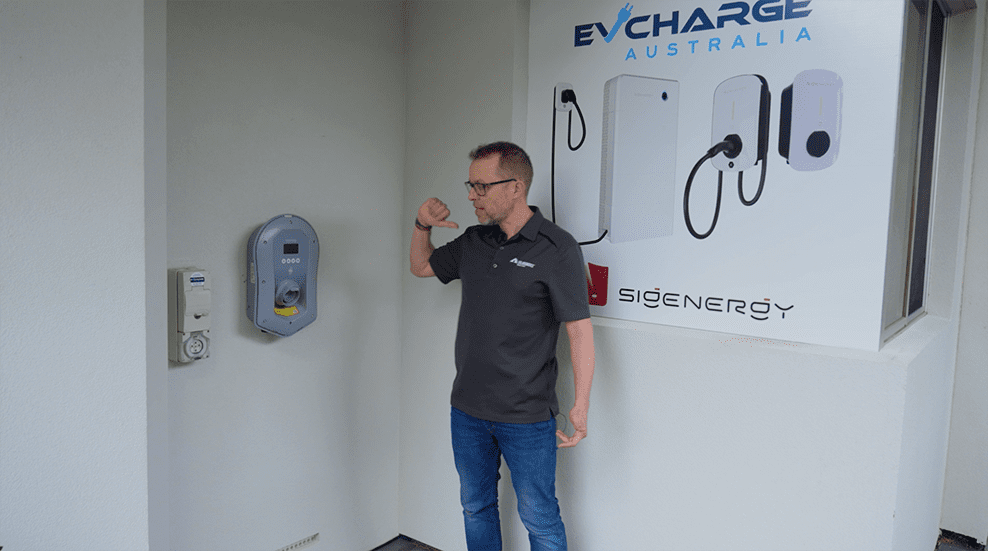
You’re outta here!
Sigenergy’s SigenStor is a modular unit.
It can contain:
- Battery modules: 5 kWh or 8 kWh increments. The 8 kWh modules cost about 20% less per kWh than the 5 kWh modules, so I know which ones I’d rather buy!
- DC EV charger module: Comes in 12.5 or 25 kW configurations.
- Hybrid inverter module: Comes in single-phase and three-phase variants (up to a whopping 25kW capacity in three-phase). You can install this module and add the battery/EV charger modules later.
First Up – The Battery Modules
This stack has four 8 kWh battery modules, for a total of 32 kWh.
At 74 kg each, they gave my keyboard warrior arms a workout – especially when it came to lifting the final module up top:
Price-wise, each 8 kWh module costs around AU$4,800, while the 5 kWh modules run $3,800. Per kWh, that’s $600 and $760 respectively.
The Star Of The Show – The Bidirectional-Ready DC EV Charger
This stack has the top-end 25kW DC EV charger.
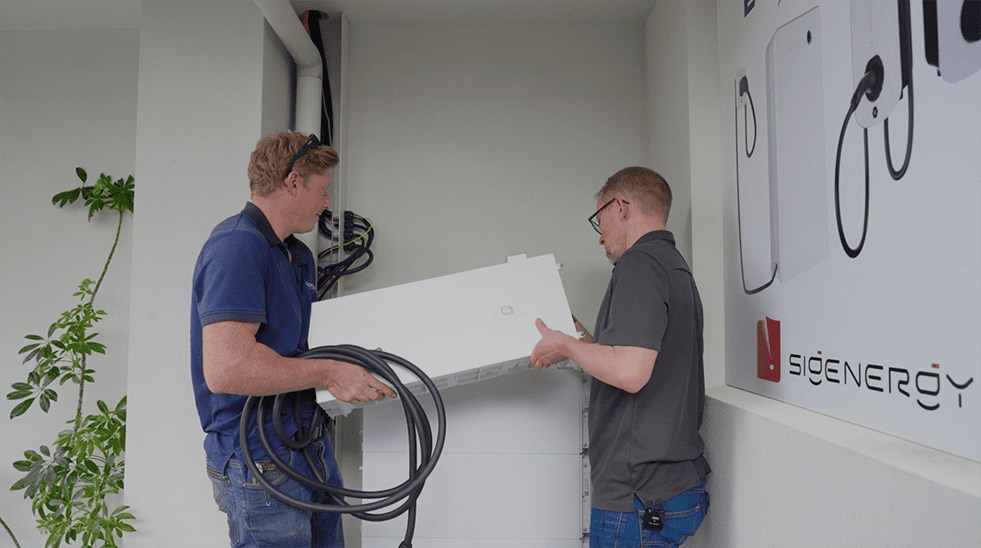
Thank God this was only 40 kg
What makes it so special relative to other home EV chargers? Don’t most of them (including Sigenergy) have 22kW options?
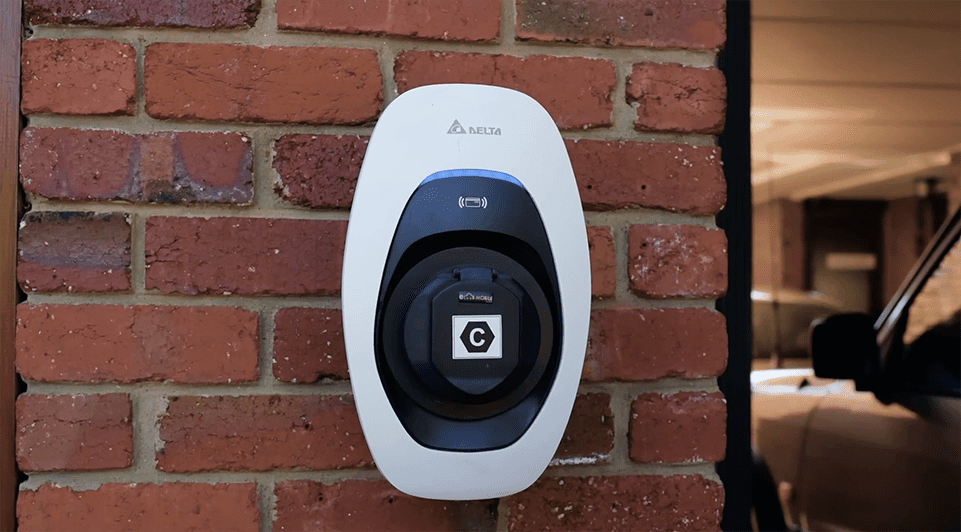
My untethered wall-mounted 22kW Delta AC MAX
Yes, but most are AC, not DC. This means your EVs onboard AC>DC charger limits your true charging speed.
Most EVs can be charged at 11kW for AC, except for some high-end luxury brands like Porsche. Some, like BYD, can only charge at 7kW.
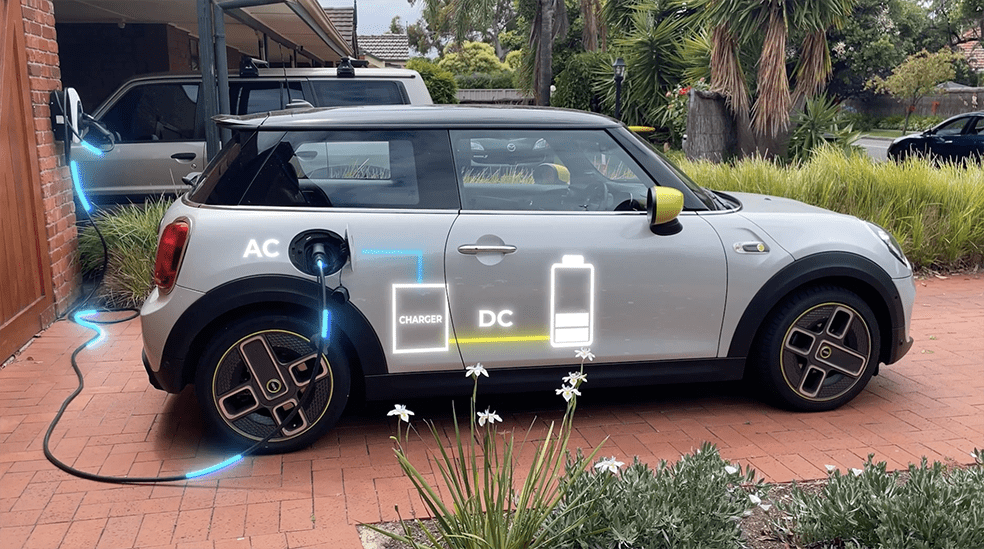
My wife’s Mini Cooper SE, with an onboard 11kW AC>DC charger.
So even if you have a 22kW three-phase AC EV charger, you’ll max out at 11kW.
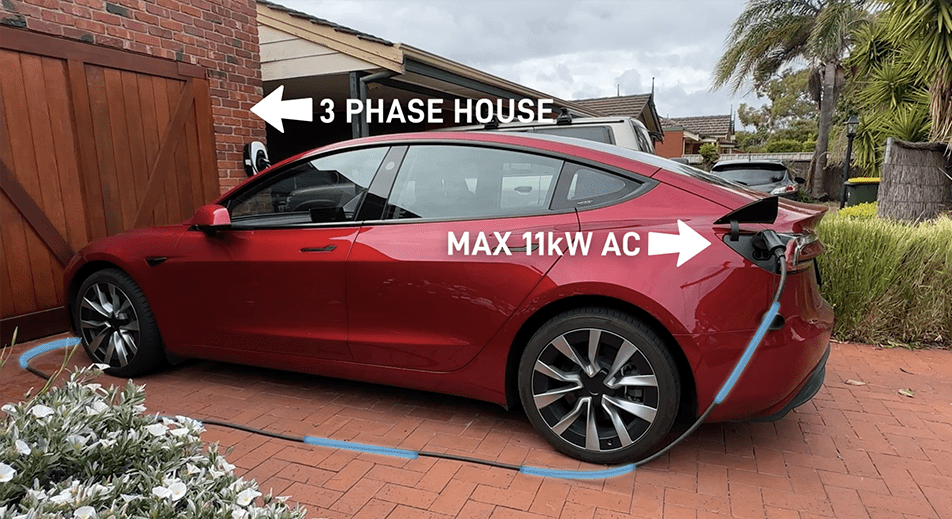
Even though I have a 22kW charger, the Tesla can only handle 11kW
DC EV chargers bypass the onboard charger and go straight into the battery.
So, the Sigenstor’s 25kW charger gives your EV the full 25 kW at home.
The Sigenergy DC EV charger is also bidirectional ready, which means with a software update and a compatible EV, you can use your car as a battery for your house…
…once grid regulations catch up.
It comes pre-wired with a “CCS2” plug, which is beefier than the standard AC type 2 plug (because it needs the two DC pins at the bottom)
Price-wise, the Sigenstor 12.5kW charging module retails for around $7,000. The 25kW module retails for around $8,500.
That’s a lot of money, but considering that it’s bidirectional ready, it’s a reasonable price, as other bidirectional chargers cost around $10,000.
Final Piece Of The Puzzle – The Hybrid Inverter Module
Sigenergy’s hybrid inverter is the control unit for both the batteries and EV charger.
Single-phase models are available in 5 or 6 kW, and three-phase models are available in 5, 10, 15, or 25 kW.
The largest 25kW three-phase module costs around $6,000 retail, while the smallest 5kW single-phase module is around $1,800.
Full Three-Phase UPS Backup With The Gateway
The Sigenstor backup gateway does exactly what it says on the tin.
Notably, it provides UPS backup—meaning that in a blackout, you won’t lose power, even for a moment.
Some three-phase batteries, like BYD, have a changeover time of over 15 seconds.
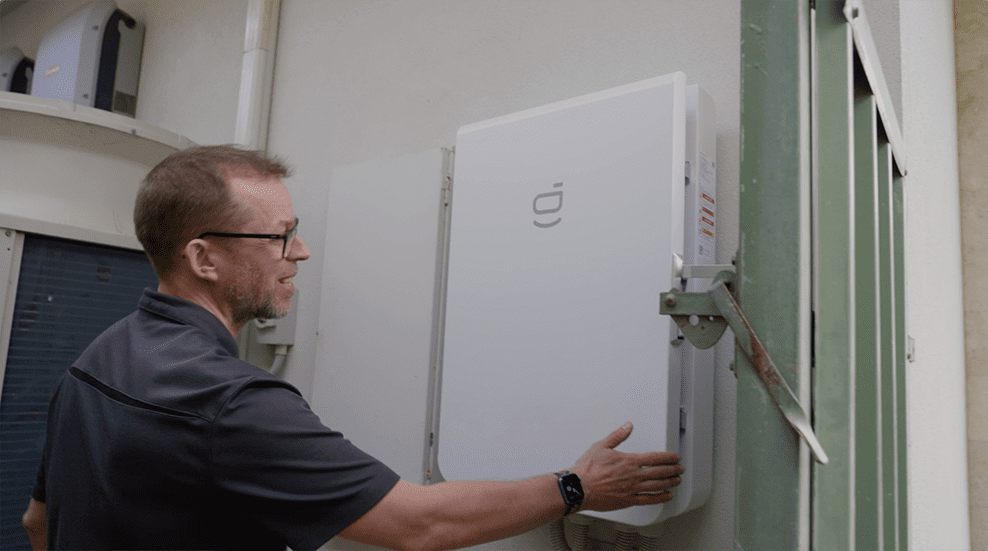
Sigenstor backup gateway
It costs around $850 for the single-phase, and $2000 three-phase.
Putting The Charger To The Test
Impressive specs on a datasheet are nice, but how do things go in reality?
One thing I want to note here is that, with a pre-wired 7.5 meter cable (with a 10m option), the Signestor must be installed relatively close to where you park your EV.
If you have a house like mine, where the driveway is around 15 meters from my battery, it just wouldn’t reach.
I drove up my Tesla Model 3 to put the charger to the test.
It worked flawlessly the first time, delivering the full 25kW:
Notably, commissioning only took all of 5 minutes. I know some major battery manufacturers whose commissioning can take an hour or more.
Final Thoughts
Let’s review what was installed:
- Four 8 kWh battery modules – 32 kWh of storage
- One 25 kW DC EV charger.
- One 25 kW three-phase hybrid inverter, with three-phase backup gateway.
All up, this package should cost around $33,000 retail – and then you need to pay someone to install it.
But if you think about what you’re getting – a huge amount of storage, UPS three-phase backup, and a 25kW bi-directional ready EV charger – I reckon Sigenergy is worth a look for those of you with deep pockets who want fast, future-proof car charging at home.
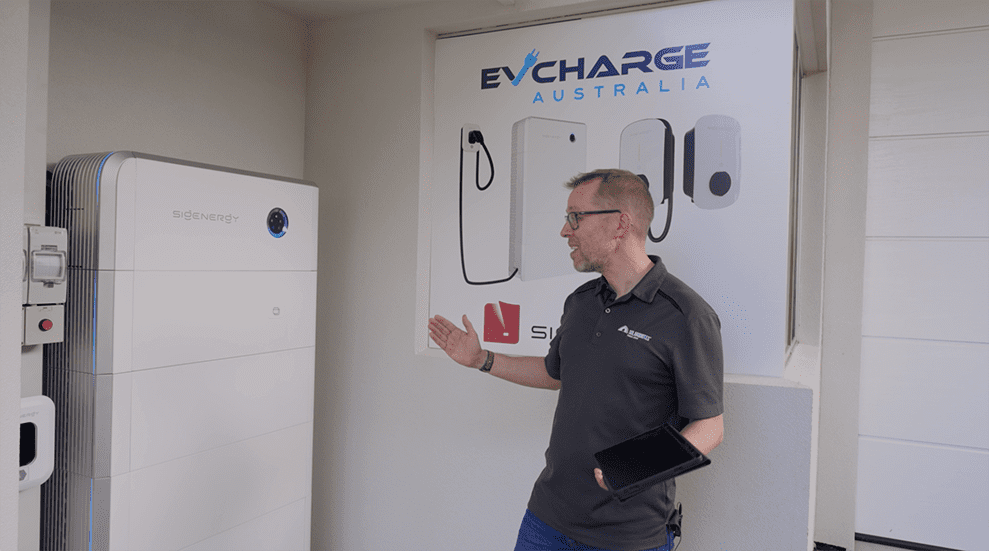
I couldn’t finish the video without admiring the neatness of the install

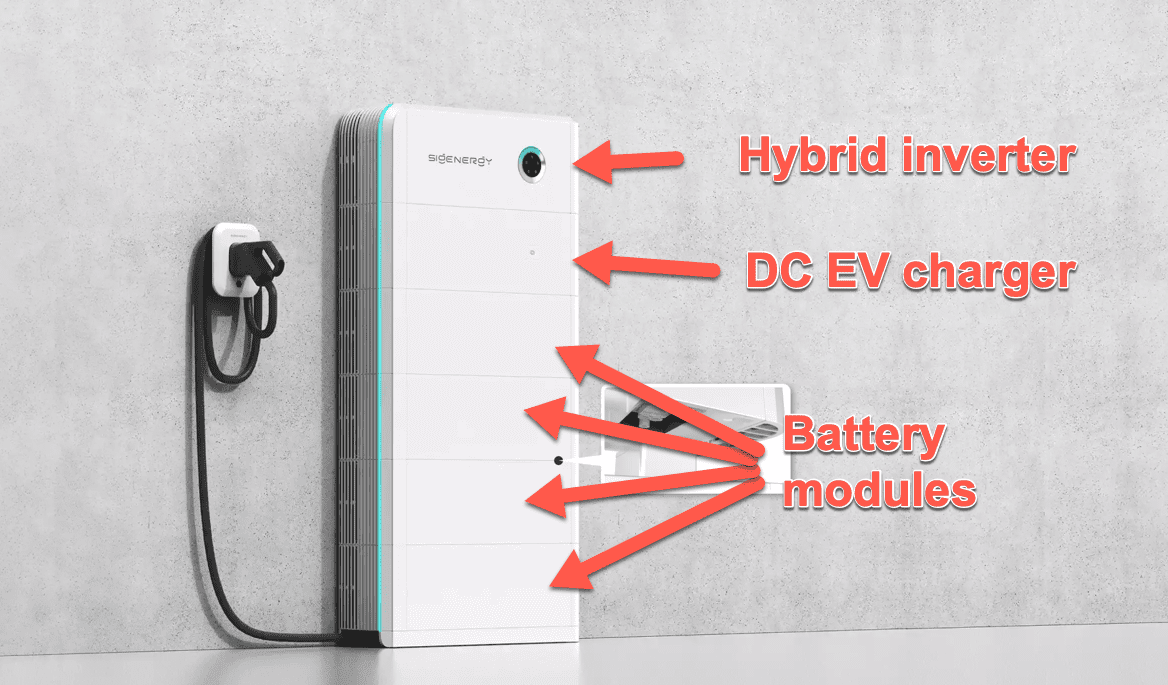
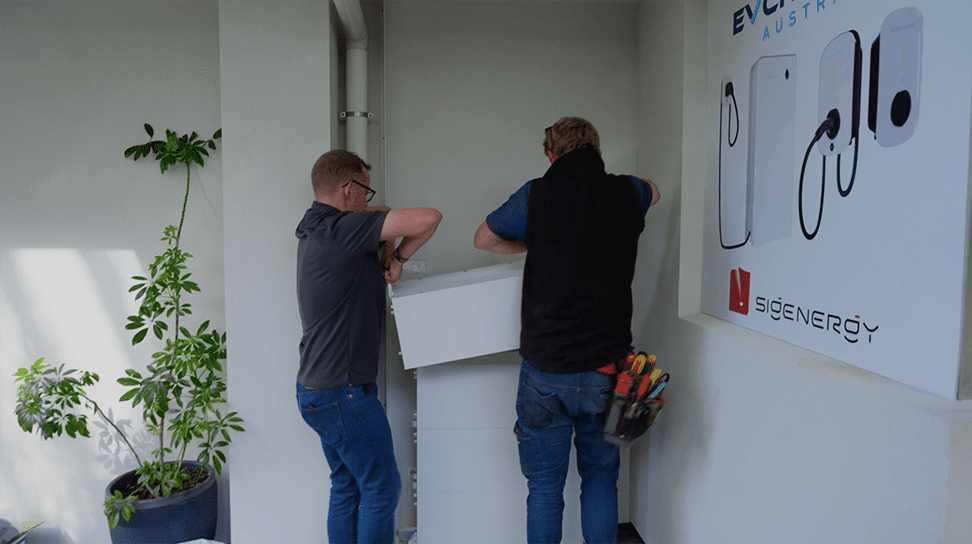
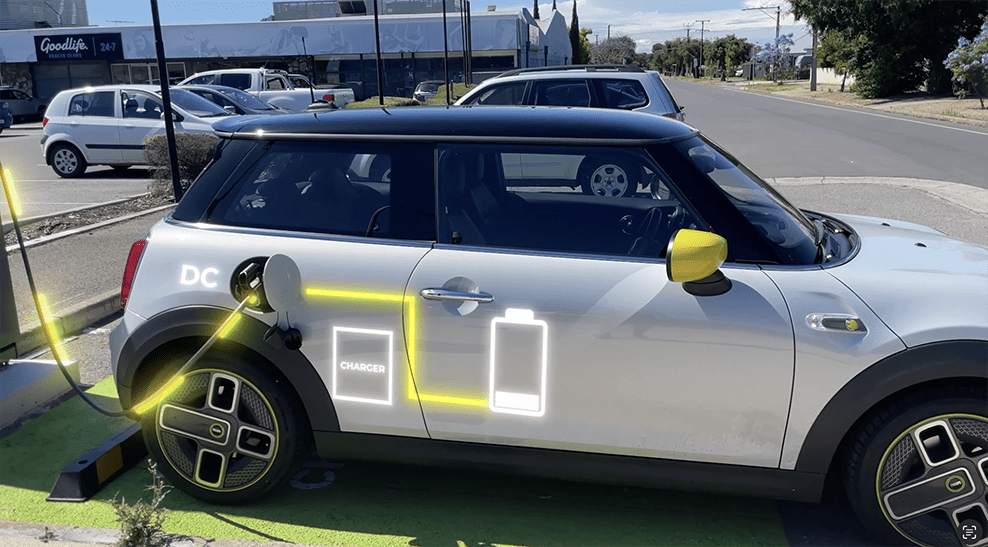
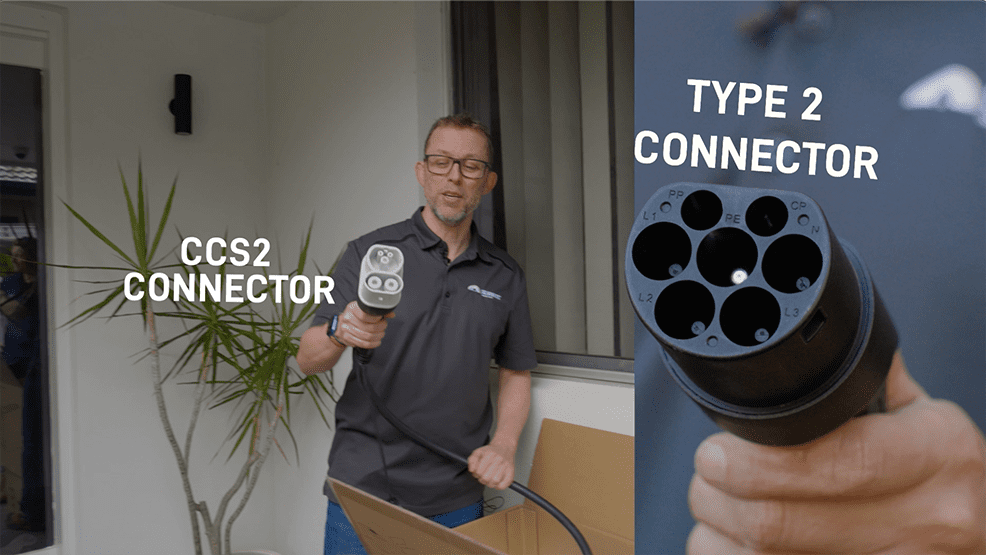
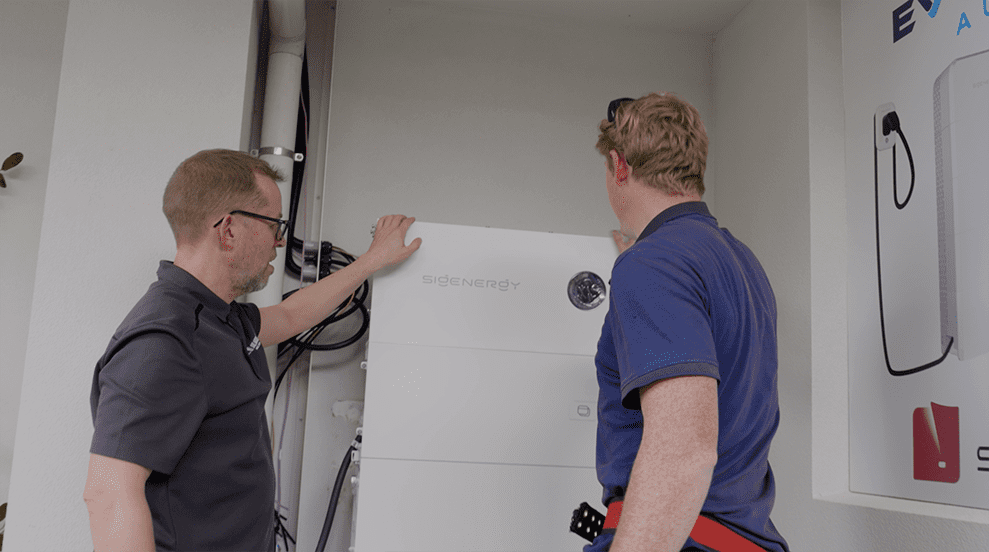
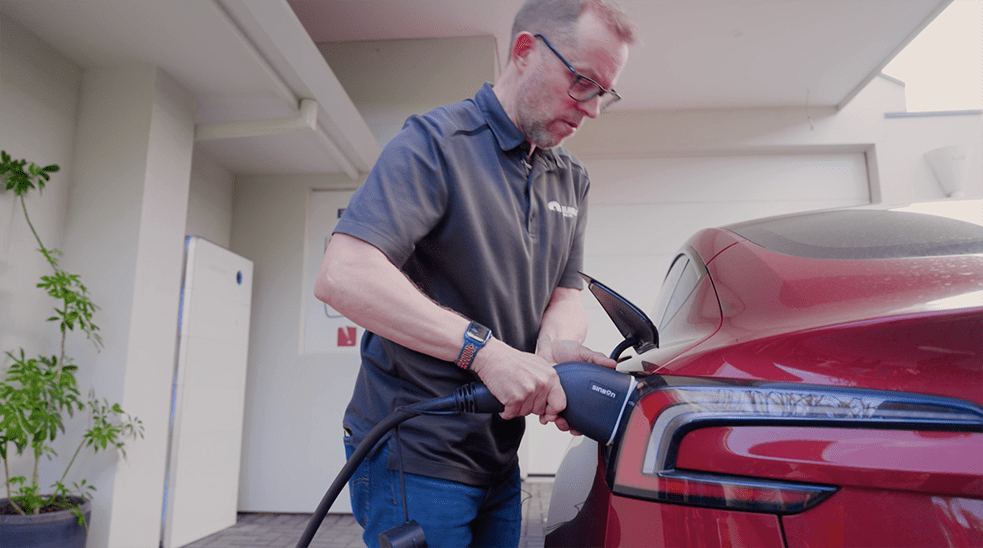
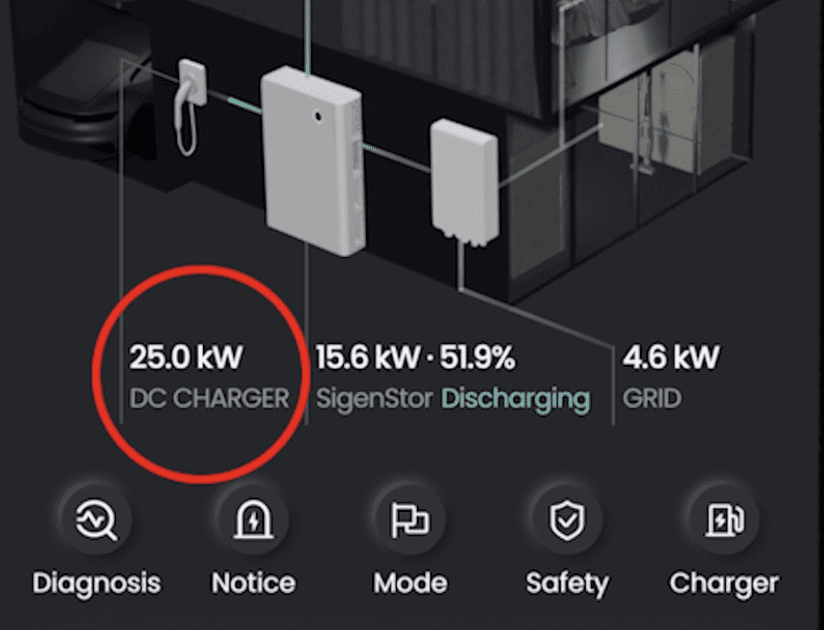
 RSS - Posts
RSS - Posts



Hi Finn,
Very impressive.
Can the system work with existing batteries or do you have to remove those?
Will the system integrate with existing solar systems so you can direct the electricity produced from solar to power the house, or the batteries, or the EV – prioritising the order of energy distribution?
Does the DC charging work on all EV’s? It seems from your test it works on Tesla (aren’t 3/Y limited to 11kWh on AC).
Good info. Is the module compatible with other inverters and batteries. Also, on the photo looks quite large. What are the dimensions and can it be installed outdoor? Thank you.
Hi Finn
So sorry to see you going.
Sounds a very impressive unit.
After what has been hi-lited in recent times in relation to Chinese motor vehicles and other Chinese products with links to China being hack-able by the CCP should they wish to do so, I would be very hesitant about investing in one of these.
I personally am very concerned about the way the world is going, including Australia, and certainly do not trust the Chinese and do worry about what our grand kids may one day be faced with.
I have contacted you previously and will soon be having solar installed on the roof of my newly renovated home (3 phase) and will be looking at storage options.
I do receive your emails and set them aside for research purposes as things are moving so quickly.
Many thanks for all you have said and done in the past – yes, I know you say you will be around for some time to come.
Lawrie Mitchell
Great system , becoming very popular too. Sure glad that’s not a window next to BESS 😉
Andy, please, that’s clearly just an advertising hoarding.
Would this system work with just single phase and no battery (aside from the bidirectional from the ev)? What kind of solar inputs would be required to support the 25kw dc charging?
Was this video sponsored?
I would never have had to ask this question previously but with the upcoming changes I now have to weigh these sorts of questions against each piece of content.
Thank you in advance for your transparency
No.
We do not take money from manufacturers.
Nothing has changed.
Thanks Finn, well done on the sale.
On the above would you comment?
The bidirectional will in the future negate the need for a large fixed home battery correct? I understand that bidirectional is not available yet, withstanding that why would you fit up a big fixed battery?
Is it for charging purposes or for your testing parameters.
Regards.
Hi Kel,
Bi-directional is going to change a lot of things. The networks are relying on it to make things work as we abandon domestic gas and double the throughput of energy on the electricity network.
Some places are still going to need biggish house batteries though, when they don’t have enough roof for solar or a car park space they can reliably connect to their house.
https://www.solarquotes.com.au/blog/install-second-powerwall/
Looks great, looking forward to you conducting some solid testing and tabling those results.
Are you able to test the bidirectional, any bets on when it could be possible?
Good one Finn.
Hi there,
Thanks for the article, something I’ve been waiting for, just to finish off my electrical journey!
Can you tell me of solar installers in NSW and the Albury Wodonga area in particular, who are agents of or Sinenergy?
Thanks, Geert.
Hi Geert,
Poke your details into the website and there’s space at the end for you to add some notes… ask for Sigen there 😉
click on this link to start
Was that the Zappi going into the rubbish bin?!
Sounds good.
“This means your EVs onboard AC>DC charger limits your true charging speed” – I think you mean AC>DC rectifier, not charger.
EVs do not have onboard chargers.
Hi Victor,
Technically a rectifier is a main component in a battery charger, which also includes capacitors for smoothing DC output and control circuits to regulate voltage and current.
EV makers refer to the equipment they install in the car as an “OBC” because it’s literally an On Board Charger. The OBC takes 230 or 400VAC from the EVSE on the wall, boosting it to anywhere from 400 to 800VDC for the car battery and maintaining appropriate controls depending on state of charge, temperature & available current.
It’s exciting stuff!!
Hopefully it will have integration capabilities with home automation systems. Infrastructure like this will form the backbone powering homes and being able to leverage it in this manner is also important.
(Of course, it is secondary to the primary requirements of the system and the capabilities it delivers, no question there)
Hi Finn
Does this mean with this unit and a suitable car we are good to go again with bi directional charging in South Australia ?
The only thing missing is approval from SA Power Networks to enable the bi-directional function in the charger…
Chris Bowen has said the regulations will be in place by the end of the year https://www.pv-magazine-australia.com/2024/11/11/bowen-gives-vehicle-to-grid-technology-green-light/
Any idea how we can find out which EV’s are capable of outputting (up to) 25 kW of DC?
I note that the install was a 3 phase unit, maybe a dumb question, but if all I have available is single phase, would that work?
Hi John,
You can add single phase solar to a 3 phase site, but not a 3 phase inverter on a single phase premises.
My understanding is that
1) the company has a single phase hybrid inverter range – see
https://www.sigenergy.com/en/support/preview_files?cid=335
(although, any single phase inverter with capacity greater than5kWE is banned for the shonky SWIS grid in WA), and,
2) as mentioned in the article above, the DC BEV charger apparently is available both with 12.5kW capacity (suitable for single phase grid connection with 15A grid fuse?) and 22kW capacity (three phase).
So, whilst the 22kW DC BEV charger is not applicable for single phase grid connections (which, on the WA SWIS grid, have the 15kW (63A) grid fuse limitation), the system, with the lesser DC BEV charging capacity, appears to be available for single phase grid connections, with 2x oversizing for the hybrid inverter, and, the single phase hybrid inverter range, apparently able to manage up to 48kWh capacity of BESS, in the integrated system.
This information is based on the information contained in the article, and, documents accessible on the web site at https://www.sigenergy.com/ .
What news of the EV manufacturers coming on board with bidirectional?
The Hyundai has taken a step towards the general direction of, but when will it be available as an option. We are going to need the EV makers to get cracking or do you all feel it’s a simple upgrade?
I don’t recall Tesla even talking about it.
Hi Kel,
Nissan and Mitsubishi are on board but the only charger on the marked using the CHAdeMO standard plug has stopped production. We’ve written several post about the Wallbox Quasar and our mate Joeseph from Ballycroft Winery using one.
Otherwise there’s this :
https://www.solarquotes.com.au/blog/hoem-review/
There is a Sigenstor option for CHAdeMO but that was in the preliminary spec sheet, and not marked for AU use. But the technology could appear in AU, who knows. Not holding my breath though!
Interesting Chris,
I’ll have to get all the Leaf & iMiev owners to haunt Wil from Sigenergy about that.
To quote that well known advert for a motor car … “BUGGER”.
Who are the best installers for Sigenergy in Brisbane Qld. I have a few names but none with many reviews?
Thanks guys.
Hi Peter,
Try [email protected] for advice there, he’s the MD for Sigen in Australia
Hi Finn, Thanks for all this info – we’ve just installed a Sigenstor at home including the DC to DC charger. Will it do bi-directional charging for all EVs? I read it can do rapid charging for all EVS except the Nissan.
Hi Finn,
Thank you for the article, a very good overview. I have two questions when the three-phase Sigenstor enters into UPS back up mode:
1. Would an existing three phase solar system installed on the house continue to supply power and offset the amount drawn from the Sigenstor when in UPS mode; and
2. If the three-phase solar system was producing more electricity than used by the household would the Sigenstor batteries charge while in UPS mode?
Thank you,
Justin
Hi I am pricing different batteries and Ev chargers as I just purchased an MG ZS. I have three phase at my house. If I purchased the 25kw DC charger would I be able to put 50 kw into my car battery for free from the grid on Saturdays and Sundays 12-2pm (Red Energy EV owner plan) and let my excess solar go to the new home sigenergy battery?
Hi Jenny,
We probably have to get everyone on the same page about instantaneous capacity & the hours spent charging.
A standard 3 phase 63a supply from the street will only deliver 43kW peak… but for a two hour window that could be 86kWh.
https://www.solarquotes.com.au/blog/kw-and-kwh-what-is-the-difference/
Essential Energy will reportedly soon support V2G with CCS2 connectors using Sigenergy which will be great news for Lightning, BYD Shark etc. and other BEV and PHEV vehicles in regional NSW.
https://thedriven.io/2025/04/09/vehicle-to-grid-milestone-electric-ute-trial-paves-way-for-evs-to-be-batteries-on-wheels